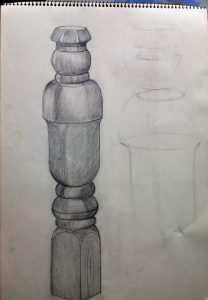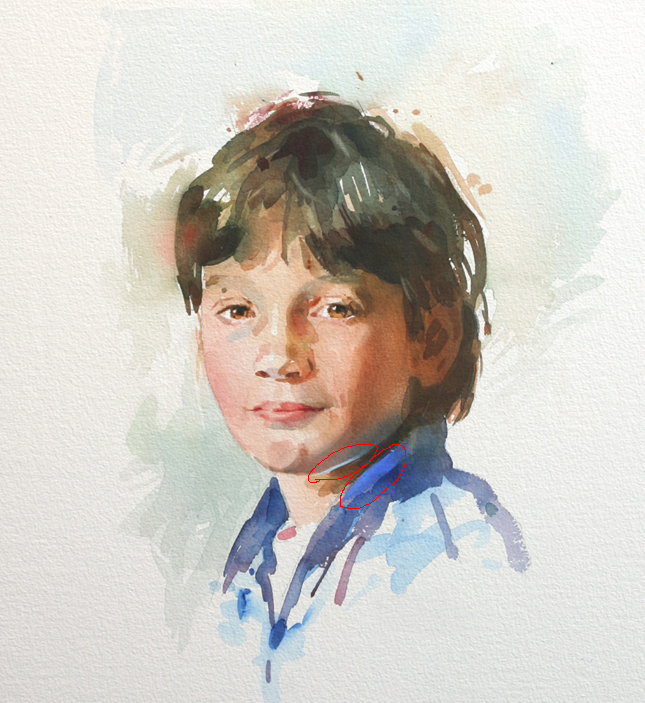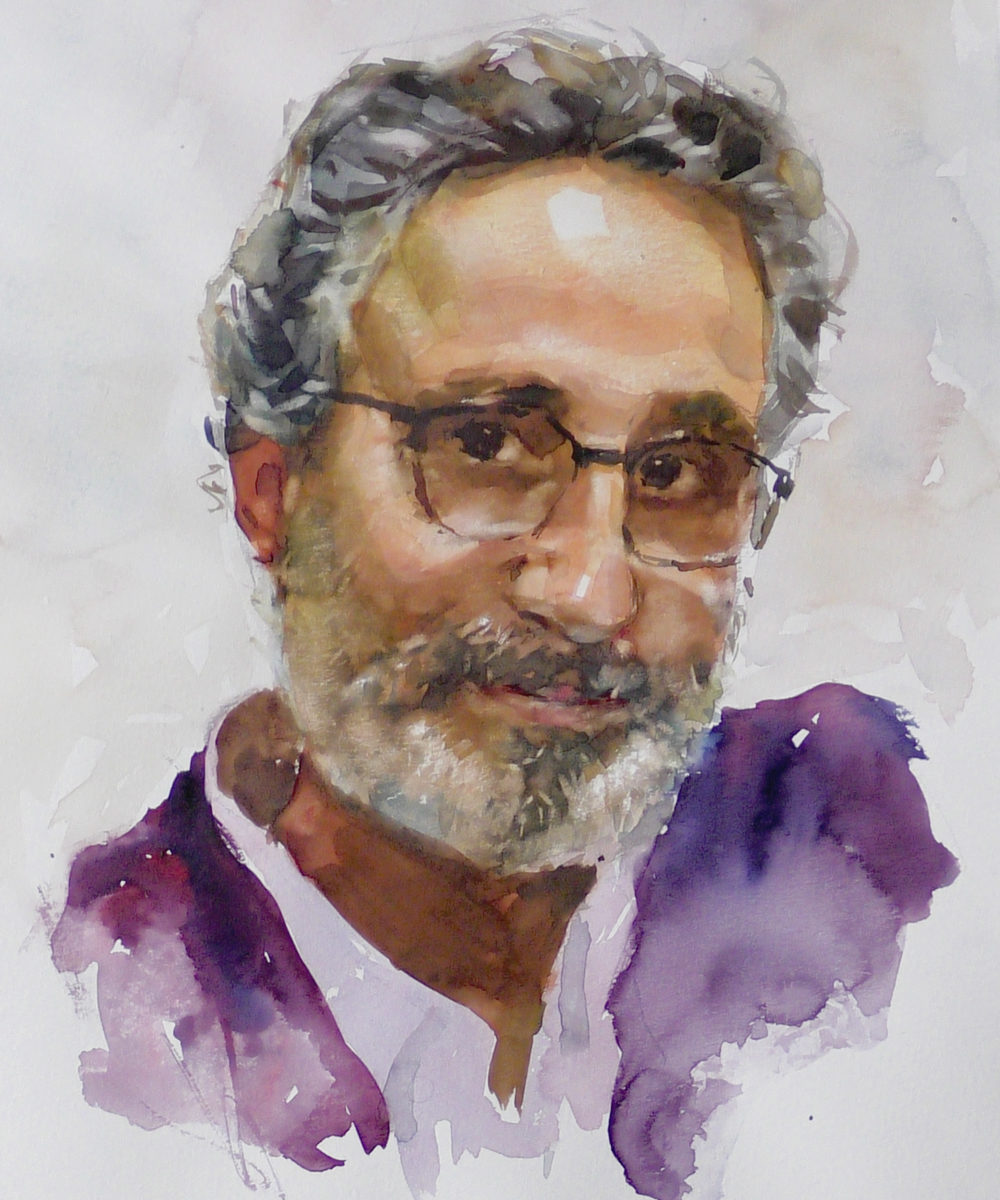Today, May 18, I launch my newest video tutorial. How to paint a portrait in watercolour. Continue reading “How to paint a portrait in watercolour”
I loved all kinds of drawing
 When I was 11 years old I received my first drawing lessons from Beatus Nijs. I´ve written about him before. To him I owe much of the success of my entire career. He was like a father to me. He encouraged me enormously and made me draw everything that was available. He once gave me a table leg to study as homework. I found a drawing pad of mine from 1964 with this pencil drawing. I was 13 years old. If you look closely you can see on the right side Beatus´ drawing correction. Continue reading “I loved all kinds of drawing”
When I was 11 years old I received my first drawing lessons from Beatus Nijs. I´ve written about him before. To him I owe much of the success of my entire career. He was like a father to me. He encouraged me enormously and made me draw everything that was available. He once gave me a table leg to study as homework. I found a drawing pad of mine from 1964 with this pencil drawing. I was 13 years old. If you look closely you can see on the right side Beatus´ drawing correction. Continue reading “I loved all kinds of drawing”
Where are the gouache strokes?

The answer to my question of two weeks ago, where in this watercolour portrait I applied two gouache strokes, is this: the bright reflected light under the chin and the blue accent on the collar of the shirt. Among the good answers I raffeld a DVD.
The DVD goes to:
Marija Gaspar from Zagreb. Congratulations Marija!
Thank you all for your participation.
How I prepare watercolour paper
This week I made a short video to show you how I stretch watercolour paper.
There are numerous professional grade, watercolour blocks on the market. (See my last post.) But when I use single sheets, I stretch it myself, on board. This method makes it possible to work even on low quality paper in watercolour.
- First, I cut four strips of water-activated gummed paper tape at the correct length.
- Then, I moisten the water colour paper with a sponge.
- I leave it to absorb the water and to fully expand.
- I stick the wet paper onto the board and let it dry. In summer this takes an hour, in winter more than double that time.
- Once dry, the paper is tightly stretched.
- Once finished I cut, with a sharp knife, around the painting cropping the paper.
Now I can make my watercolour painting with no problems. The paper will not wrinkle when it comes into contact with water.




